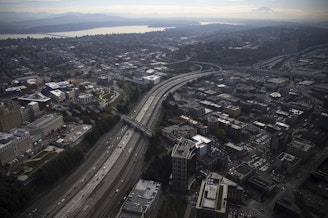The evolution of the Seattle protests
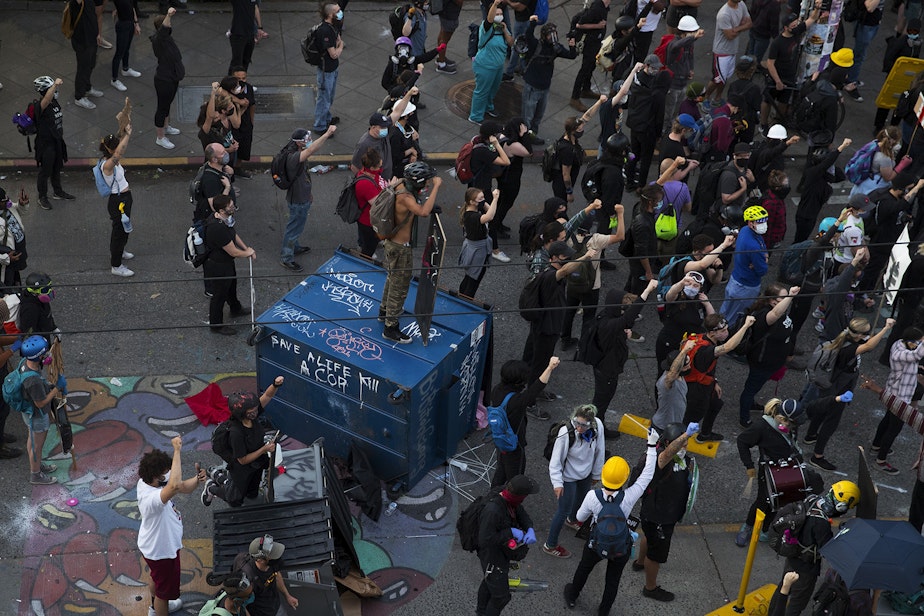
“If ever there's been a climate for change politically, now is it. We got nothing but time and disappointment to just fuel it.”
E
mily Slider had never been to a protest before but she had to go to this one.
Three days earlier, George Floyd was killed by Minneapolis law enforcement. Slider was in Ohio with her family. She flew back to Seattle and showed up downtown that last Saturday in May, alone.
“I didn't want to wait for my friends to feel comfortable. I just wanted to go and find out if I felt comfortable,” Slider said.
It was the first of dozens of protests she’s been to this summer – protests that have challenged and changed her politics.
Slider is one of countless protesters who has jumped into the social movements of 2020 that now drive the currents of change. But as many know, change doesn't come without resistance.
Interactions between police and protesters have escalated. And those fiery moments – often caught on camera for all to see – have furthered the belief that this time, radical transformation, not gradual reform is what’s necessary.
Slider, a white, 28-year-old preschool teacher slowly but steadily shifted left. She went from a first-time protester to contributing to CHAZ/CHOP with hand sanitizer and tarps. On Netflix, she watched “13th,” the powerful film by Ava Duvernay about the direct line between the incarceration of Black Americans today and slavery. Slider also started talking to her father, a staunch Republican about her experience at the demonstrations.
In one encounter on July 25, the time just after federal officers were deployed to Portland, Oregon, Seattle had a march in solidarity. Slider and her friend attended. But they were caught in the chaos as Seattle Police officers cracked down on protesters after several trailers near the King County youth jail were set on fire.
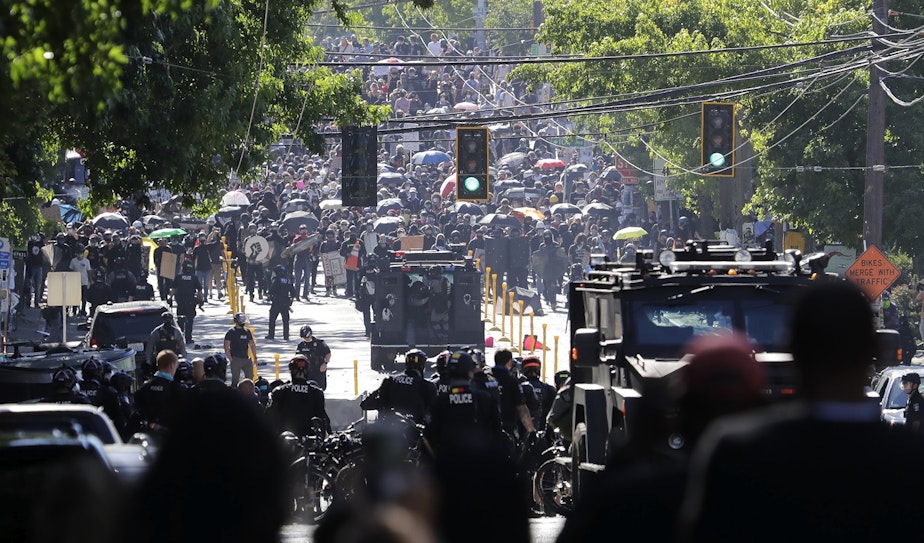
“We went from being in front of the East Precinct to all the sudden the doors rolled up, all these cops come out in riot gear,” Slider said.
She said she didn’t hear a dispersal order, and before she knew it, flash bangs and pepper spray appeared.
“One of them landed at the foot of my friend, my protest buddy, and it exploded. And she had lacerations all up her leg. It just happened in the course of a minute.”
The scene became bloody and noisy, but her friend got to a medic tent, and Slider herself started having what she believes was a panic attack. Other protesters helped her navigate through the smoke and sponge rounds and walked her to a bus stop downtown to get her home.
That moment galvanized something in her.
“This is gonna sound radical,” she admits. “And I'm cool with that, because at this point, I'm radical: I want to see policing entirely rethought.”
Slider now supports the three main points of Decriminalize Seattle to reduce the Seattle police budget by 50 percent, reallocate those funds to community organizations, and to release the protesters, with no criminal charges.
A similar thing happened to Dawn Dailey.
“Initially when the riots happened, I was not happy,” she said. “I was one of those NIMBY people, like people are people, property’s property. Don't damage the property.”
She’s a 44-year-old Korean American woman, previously a self-described Army wife and Sunday school teacher. Now she is a graduate student at the University of Washington.
“I feel like my viewpoints have changed from seeing the violence and also being hit,” Dailey said. “I myself was pepper sprayed and maced, by accident by the police and that was another thing that also radicalized me.”
Dailey was among the Seattle Wall of Moms group that has since evolved to Seattle Caregivers for Black Lives Matter. Now she works as part of a mutual aid network delivering items like hand washing stations in Seattle and Kitsap County.
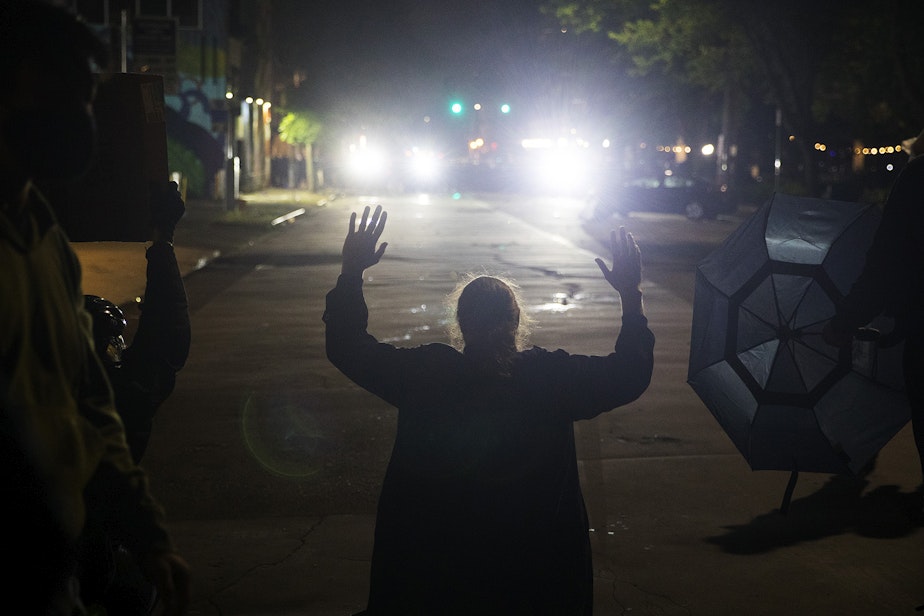
N
orm Stamper, Seattle police chief in 1999 at the time of the World Trade Organization protests, said police use of tear gas can focus demonstrators’ ire onto the police.
Stamper recalled, in an interview with KUOW’s The Record, how protesters in 1999 came to protest globalization, but left hating the police.
“When we used the tear gas, the focus was no longer child labor laws or other ills of globalization, but rather, the police,” Stamper said.
Victoria Tin-Bor Hui, a political science professor at the University of Notre Dame, said she is not surprised by the scenes playing out in Seattle and across the United States, or the effects they’re having on the protesters.
Hui, a Hong Kong native who studies social movements, said that while some Americans are often perturbed when protests don’t remain peaceful, nonviolence takes its own kind of work.
For peaceful actions to be possible, protesters specifically need to train to not react to assaults or escalation.
“The majority of people are just human beings. When they see that their peers or they themselves [being] beaten up, they decide, ‘We have to either protect ourselves or we have to take revenge.’”
She said that the Black Lives Matter protests have shown “that radicalization escalation is actually almost like the natural course of development.”
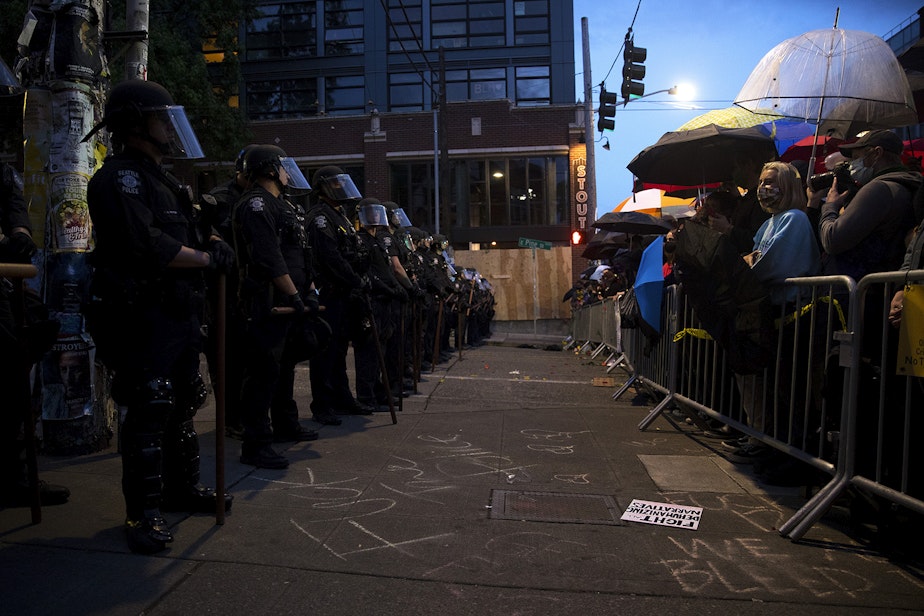
Many attending these demonstrations in Seattle and across the Northwest are first-time protesters. They aren’t trained to remain passive. And more so, many of them are not affiliated with a specific organization. Most of the protests, especially in May and June were spontaneous “flash” protests.
Later, activists from Black Lives Matter Seattle-King County and other organizations, would say they saw the benefits of having a leaderless movement; namely not having a proverbial head to cut off and without targets on the backs of organizers who feared retribution if they identified themselves.
Secondly, like the civil rights movement in the 60s, these protests are heightened by both the media and the reactions of police. During the Civil Rights era, white people watching the news were horrified by images of peaceful Black protesters hosed down by law enforcement for daring to sit at a white’s only establishment.
Now in a modern iteration, our screens are in our pockets and with a single click, we can spread the harrowing videos of police violence. From Eric Garner’s slow death yelling out “I can’t breathe,” at the hands of New York police to Manuel Ellis’ killing in Tacoma this year, people have the ability to watch and record in real time. And then they must sit with what they’ve witnessed – online together and yet in isolation in their own homes.
They also have to reckon with how police react to protesters – whether that’s pepper spraying a child to the hundreds of journalists across the nation who were deliberately targeted by police.
Hui points out protests in other parts of the world like Chile and Belarus, have hinged on the ability of law enforcement to escalate or deescalate demonstrations. That’s what can ultimately make the difference between a peaceful and violent protest.
Lastly, nonviolence tends to come to an end once protesters find it’s ineffective.
“After 30 years of peaceful protest and achieving nothing -- in fact to the contrary -- Hong Kong's freedoms have been further eroded more and more. This is why the protesters last year concluded that peaceful protests have no impact,” said Hui.
Likewise while the Civil Rights Act technically provided many equal protections, for Black Americans their every day, lived reality changed much more slowly. And decades later, there are still discrepancies for marginalized groups when it comes to housing, healthcare, or education.
So as the pandemic swept through the U.S, in a way it may have set the stage for protests, as many waited on unemployment, finding themselves at home with nothing to do.
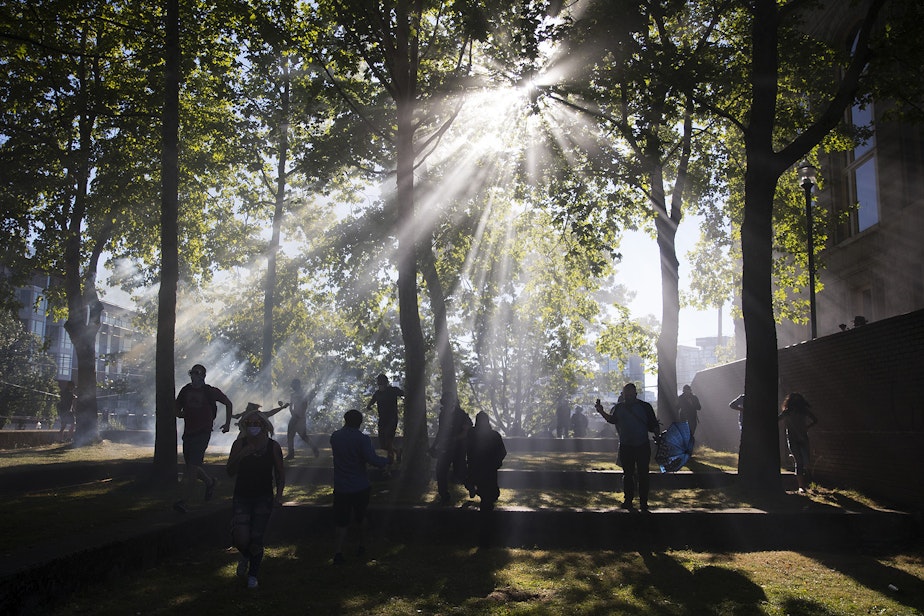
Then when the death of Floyd ignited protests in Minneapolis and across the globe, many were motivated to act – and had time to do so. Others couldn’t afford not to.
Slider explained it bluntly: “If ever there's been a climate for change politically, now is it. We got nothing but time and disappointment to just fuel it.”
Many like her wanted to see the police officers who killed George Floyd and Breonna Taylor held responsible. Others wanted to see their local police department defunded or federal policing and justice systems restructured completely.
For Dailey, it’s frustrating that direct action is what it takes to get change. “Being radical means to me being passionate about justice. I think it's insane that you have to be considered radical or radicalized to help out other vulnerable people.”
Another protester and organizer who goes by Nate shared their own frustration: “There are people that have finally recovered from their injuries after the first time being tear gas and beaten by the police. Finally out again and they're pissed because they ended up with a hospital bill and those cops ended up with overtime.”
Now with the election on the horizon there’s tension crackling in the air.
Researchers and voters on all sides of the political spectrum are predicting violence after the election results. And while many more protests may spark between now and then, the truth is people like Nate, Dailey, and Slider are not going away.
In fact, they might just be getting started.
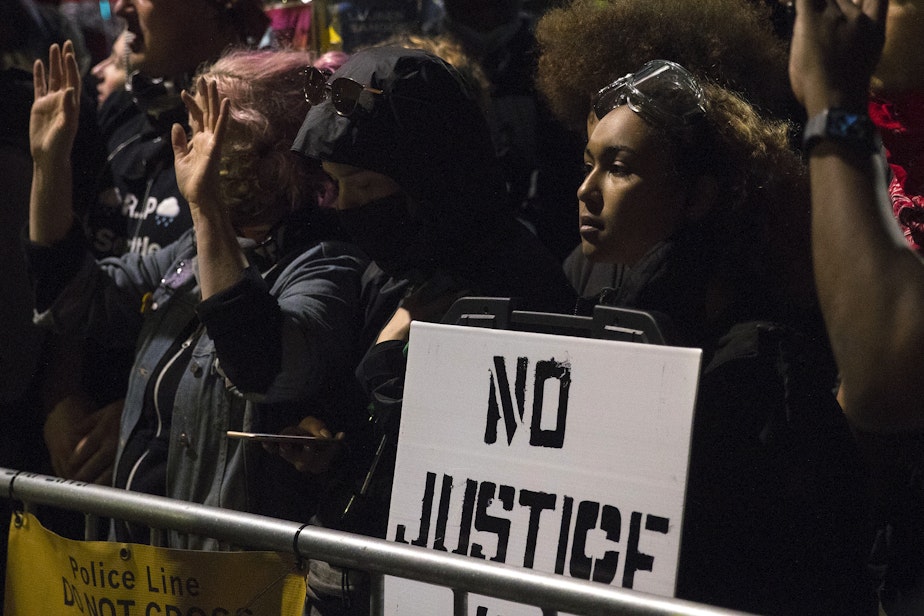
Correction: A previous version of this article cited used the name Dawn Bailey. It is Dawn Dailey.




